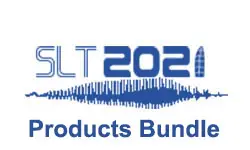Graphpb: Graphical Representations Of Prosody Boundary In Speech Synthesis
Aolan Sun, Jianzong Wang, Ning Cheng, Huayi Peng, Zhen Zeng, Lingwei Kong, Jing Xiao
-
Members: FreeSPS
IEEE Members: $11.00
Non-members: $15.00Length: 0:09:59
19 Jan 2021
This paper introduces a graphical representation approach of prosody boundary (GraphPB) in the task of Chinese speech synthesis, intending to parse the semantic and syntactic relationship of input sequences in a graphical domain for improving the prosody performance. The nodes of the graph embedding are formed by prosodic words, and the edges are formed by the other prosodic boundaries, namely prosodic phrase boundary (PPH) and intonation phrase boundary (IPH). Different Graph Neural Networks (GNN) like Gated Graph Neural Network (GGNN) and Graph Long Short-term Memory (G-LSTM) are utilised as graph encoders to exploit the graphical prosody boundary information. Graph-to-sequence model is proposed and formed by a graph encoder and an attentional decoder. Two techniques are proposed to embed sequential information into the graph-to-sequence text-to-speech model. The experimental results show that this proposed approach can encode the phonetic and prosody rhythm of an utterance. The mean opinion score (MOS) of these GNN models shows comparative results with the state-of-the-art sequence-to-sequence models with better performance in the aspect of prosody. This provides an alternative approach for prosody modelling in end-to-end speech synthesis.



